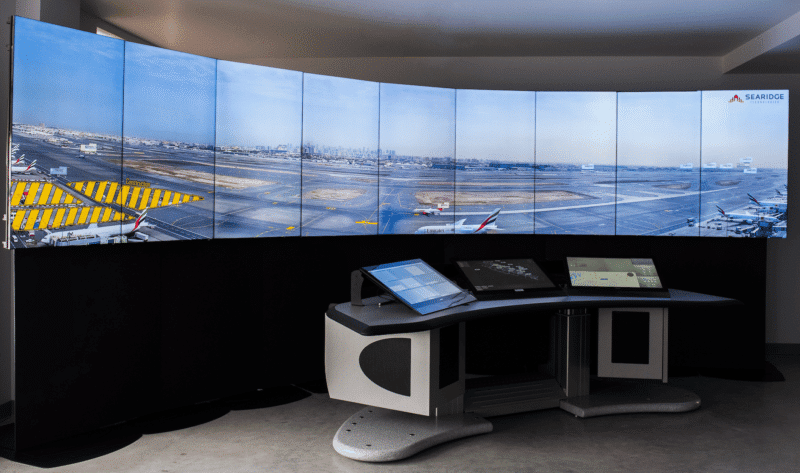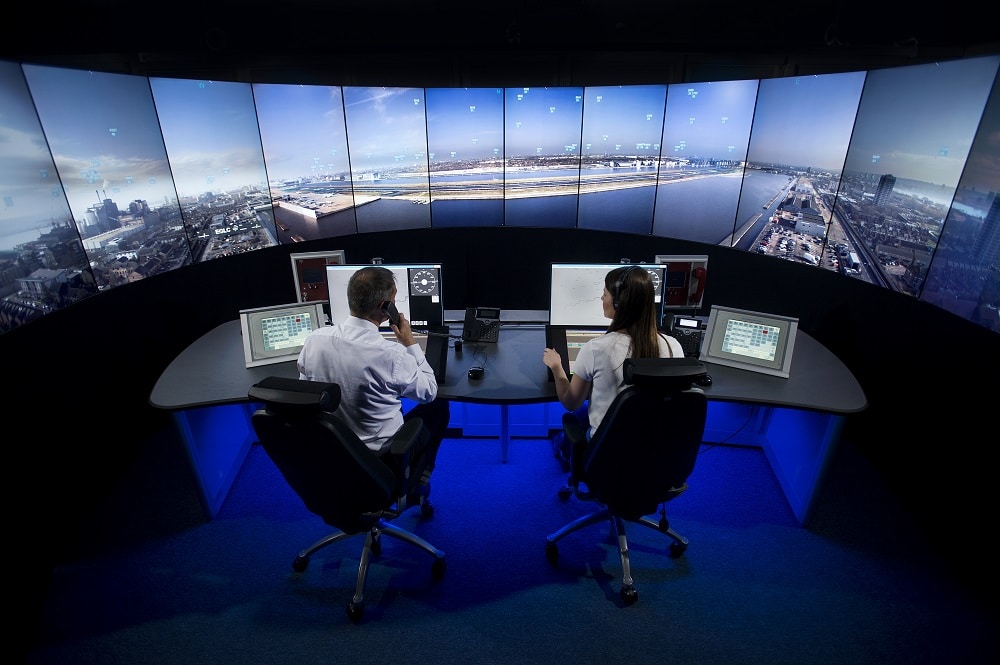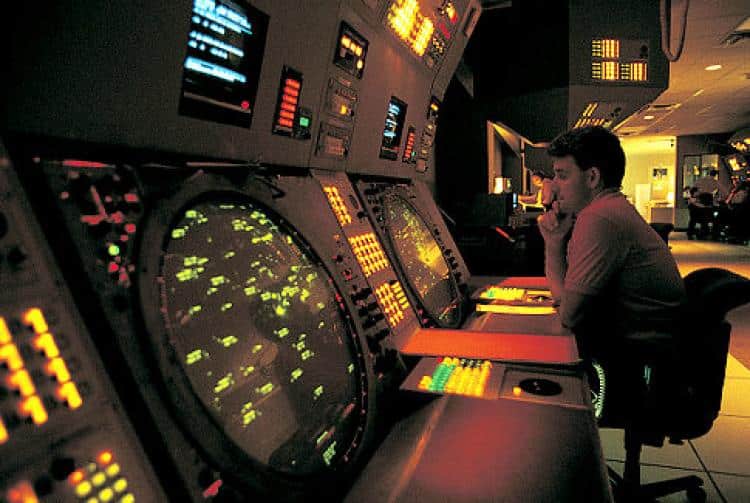Aviation
A London Airport Is Getting an Upgraded Air Traffic Control Tower-80 Miles Away From All the Planes

A London Airport Is Getting an Upgraded Air Traffic Control Tower-80 Miles Away From All the Planes
London’s City Airport is getting its high-tech upgrade in large part due to a lack of space. Instead of a bulky traditional tower that has to house actual humans, the new ATC tower will simply be host to a whole bunch of cameras, with live footage piped to controllers in a building some 18 miles away.
London’s City Airport is getting its high-tech upgrade in large part due to a lack of space. Instead of a bulky traditional tower that has to house actual humans, the new ATC tower will simply be host to a whole bunch of cameras, with live footage piped to controllers in a building some 18 miles away. There are additional benefits beside the saved space, too. The screens at the remote headquarters can compress a 360-degree view into 270 degrees, making it possible monitor more action in a smaller space
The airport is to decommission its traditional tower in 2019, meaning aircraft will be directed from a digital control room in Hampshire. Air traffic controllers will have a 360-degree, high definition view of the airfield, meaning they can monitor planes in more detail than by using the human eye, the airport said.
The technology has already been tested in Australia, Sweden, Norway and Ireland.
Current Situation –
The Tower Building Traditionally every airport has a conventional air traffic control tower, but they don’t come cheap. They cost millions to build and not all parts of the airfield are always visible. In comparison, going digital is more cost effective and offers real operational benefits.
A Digital Alternative
- Controllers use high definition cameras and remote sensing technology to safely and securely manage air traffic from a location away from the airport
- All operational data is transferred via a secure super-fast network to a custom built digital tower operations
room at NATS’ Swanwick air traffic control centre - Wrap around screens give the controllers an unparalleled view of the entire airport
The Technology
- High definition cameras provide a full 360 degree view of the airport
- Laser range finder for measuring distances to pin point accuracy
- Pan, tilt and zoom cameras to view any part of the airfield in unprecedented detail
- Displays enhanced with augmented reality style maps and aircraft data for increased controller awareness.
According NATS blogs Question and Answer.
How safe are digital control towers?
Everything is designed – from the technology to the procedures – with safety in mind and the same will apply for digital towers:
What happens if a camera fails?
In the system we’ll be using at London City Airport from 2019, there are 14 cameras, plus two separate ‘pan tilt zoom’ cameras. If one of the main cameras fails, one of the PTZs can quickly fill the gap until the camera can be swapped out and replaced.
What happens if all the cameras fail?
In the unlikely event that all the cameras fail, or that both of the independent video data feeds drop out, the team will revert to operating under Low Visibility Procedures as they do when in low cloud or fog, using voice communication and radar. This will slow things down, but it’s a normal part of ATC procedures and all very safe.
What about the screens?
There are 15 screens in the facility at Swanwick, meaning that if one of them fails the redundant one can instantly pick up the slack. The controllers can also rejig the order in which the screens display, meaning they will still see the airfield correctly. Then, at the right time, the defunct screen can be swapped out and replaced.
Can it be hacked?
Obviously we can never go into specifics about cyber security, but it is something we take incredibly seriously and keep under constant review. It is not an issue we ignore. What I can say it that the systems undergo extremely vigorous testing and for London City, we will have three entirely private and independent data feeds from the airport to Swanwick – two capable of carrying voice and video data, and the other just voice. 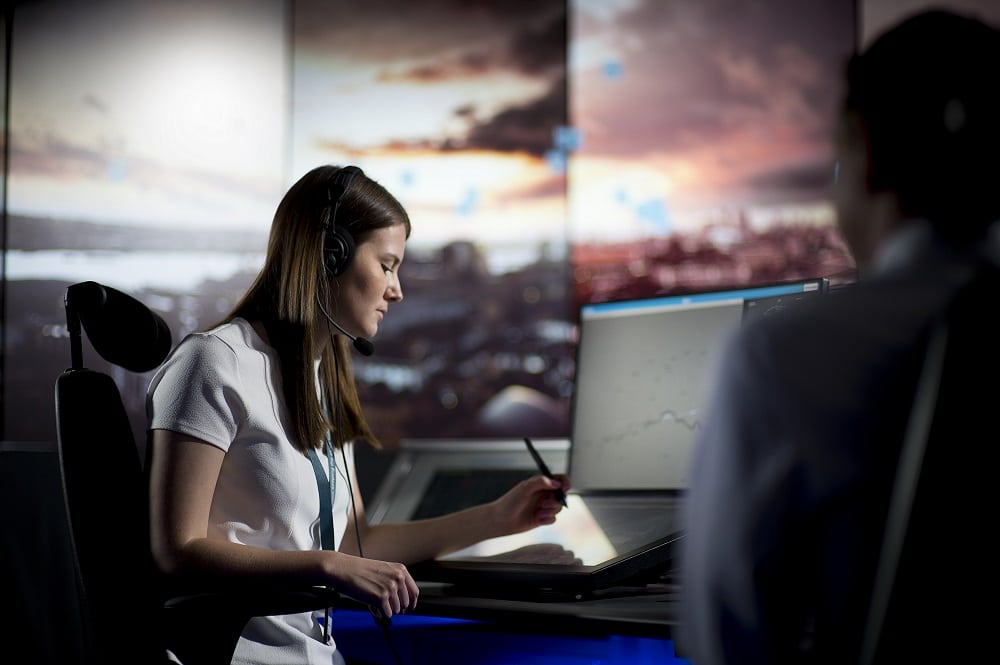
Wouldn’t it be safer to be at the airport?
This is one I hear quite a lot and I always answer by turning the question around: could it not be safer and more resilient to have your ATC operation offsite? In any case the principle of controlling aircraft from a remote location isn’t new. Our radar controllers at Swanwick and Prestwick centres are looking after aircraft potentially hundreds of miles away and all without ever setting eyes on them.
Liked it ?
Share with your Friends and Family

Airlines
US DOT says Airlines must now pay automatic refunds for cancelled flights
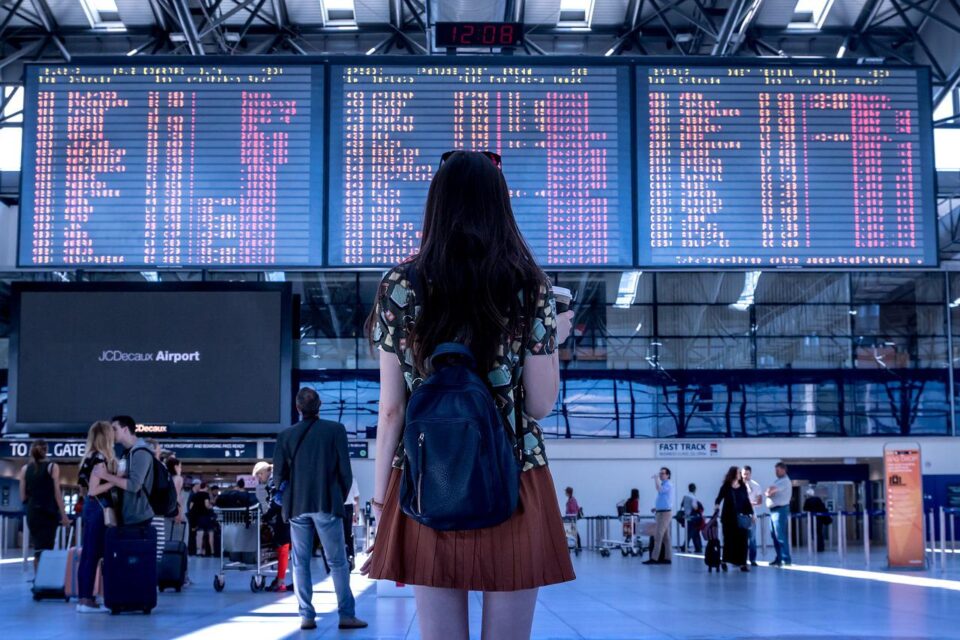
The U.S. Department of Transportation (DOT) has released a final regulation requiring airlines to quickly reimburse passengers with automatic cash refunds when owed, according to a statement made by the Biden-Harris Administration.
Under the new regulation, passengers will find it easier to get refunds when airlines dramatically alter or cancel flights, cause severe delays for checked baggage, or don’t supply the additional services they paid for.
According to a statement from the Biden-Harris Administration, the U.S. Department of Transportation (DOT) has published a final rule mandating airlines to promptly compensate customers with automatic cash refunds when they are eligible. The new rule would make it simpler for customers to receive refunds from airlines in cases when they drastically change or cancel flights, cause significant delays for checked luggage, or fail to provide the extra services they charged for.
Under the latest rule from the USDOT, passengers are guaranteed refunds in several scenarios:
- Canceled or Significantly Changed Flights: Passengers are entitled to refunds if their flight is canceled or significantly altered, including changes in departure or arrival times exceeding 3 hours domestically or 6 hours internationally, departures or arrivals from different airports, increased connections, downgrades in service class, or changes less accommodating to passengers with disabilities.
- Delayed Baggage Return: Passengers filing mishandled baggage reports can claim a refund for checked bag fees if their luggage is not returned within specific timeframes after flight arrival.
- Unprovided Extra Services: If airlines fail to deliver paid extra services like Wi-Fi, seat selection, or inflight entertainment, passengers can request refunds for those fees.
The final rule streamlines the refund process, ensuring it is:
- Automatic: Refunds are issued automatically without requiring passengers to request them.
- Prompt: Airlines must refund credit card purchases within seven business days and other payment methods within 20 calendar days.
- In Original Form of Payment: Refunds are provided in the original payment method used for purchase.
- Full Amount: Passengers receive full refunds minus the value of any portion of transportation already used, including government and airline fees.
Suggest banning family seating junk fees and ensuring that parents can travel with their kids at no additional cost. No airline promised to ensure fee-free family seating prior to efforts from President Biden and Secretary Buttigieg last year. Family seating is now guaranteed free of charge on four airlines, and the Department is working on a plan to eliminate family seating junk fees.
Propose to make passenger compensation and amenities mandatory so that travelers are taken care of when airlines cause flight delays or cancellations.
Airlines
The Nine Freedoms of the Air – Jetline Marvel
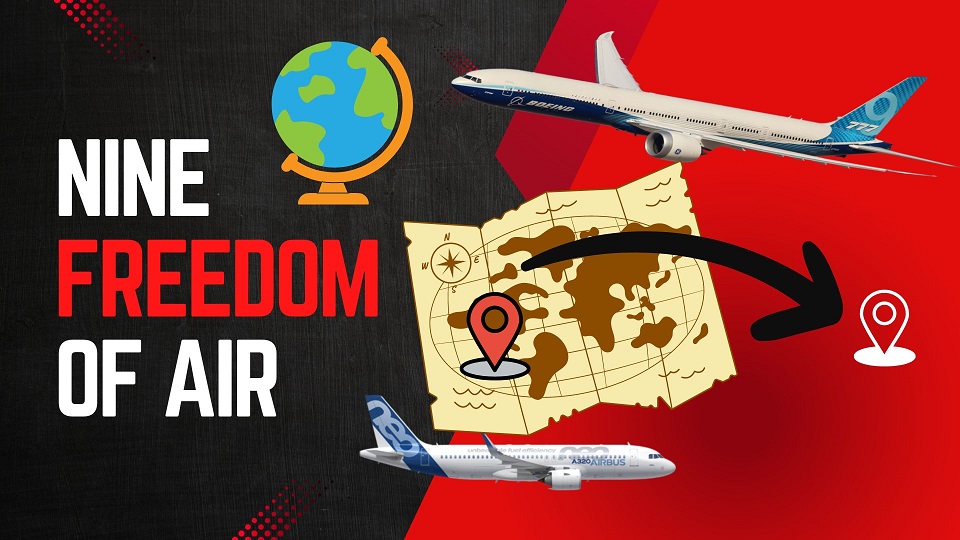
Most of us travel from one city to another city via road we need to get permission to that specific city if it is in another country like a visa or Road access permission to use its property for revenue purposes to carry passengers and Cargo. Similarly, In the airline Industry, it is also important that the Company have permission to fly and access that country whether it’s for stoppage flying above them, or Operating the passengers within that country This is called Freedom of the Air.
Some countries together they agree with certain conditions to access their Aerospace for to access for the airline to travel above their nation. If the bilateral is done for Their own countries’ airlines or other countries’ airlines. In this chapter, we understand how this thing is carried out. What all the condition has to look into that.
The Freedoms of the Air are international commercial aviation agreements (traffic rights) that grant a country’s airline(s) the privilege to enter and land in another country’s airspace. They were formulated in 1944 at an international gathering held in Chicago (known as the Chicago Convention) to establish uniformity in world air commerce. There are generally considered to be nine freedoms of the air.
Most nations of the world exchange first and second freedoms through the International Air Services Transit Agreement. The other freedoms,chase freedom airline miles when available, are usually established between countries in bilateral or multilateral air services agreements. The third and fourth freedoms are always granted together. The eighth and ninth freedoms (cabotage) have been exchanged only in limited instances
First Freedom:
The basic permission granted to an airline from one country (A) to fly through the airspace of another country (B)
Second Freedom:
The permission for a commercial airplane from country (A) to land and refuel (often called a technical stop) in another country (B).
Third Freedom :
The privilege for an airline to transport paying (Revenue) passengers from its home country (A) to another country (B).
Fourth Freedom
The rights for an airline to transport paying (Revenue )passengers from another country (B) to the airline’s home country (A).
Fifth Freedom
Fifth Freedom (also known as beyond rights): The rights for an airline to transport passengers from its home country (A) to a destination (B), then pick up and carry passengers to other international destinations (C).
Sixth Freedom:
Sixth Freedom (Combination of Third & Fourth Freedoms) The right for an airline to carry passengers or cargo between two foreign countries (B and C), provided the aircraft touches down in the airline’s home country (A).
Seventh Freedom:
The authorization for an airline to operate flights that start in a foreign country (B), skip its home country (A), and transport passengers to another international destination (C).
Eighth Freedom Air
The rights for an airline to transport passengers from one location within a country’s territory (B) to another point within the same country on a flight originating in the airline’s home country (A). This right is commonly referred to as cabotage and is notably scarce outside of Europe.
Ninth Freedom Air
The entitlement for an airline from a specific country (A) to begin a flight in a foreign country (B) and transport passengers from one location to another within that foreign country. This concept, also referred to as stand-alone cabotage, distinguishes itself from the traditional aviation definition of cabotage by not directly involving the airline’s home country.
Aviation
Air India’s B747 Makes Its Final Journey, Waving Farewell to Fans

In a poignant moment marking the end of an era in aviation history, Air India’s iconic Boeing 747 aircraft, affectionately known as the ‘Queen of the Skies,’ embarked on its ultimate journey from Mumbai’s international airport.
The departure, bound for Plainfield, USA, where it will undergo dismantling and part-stripping under the ownership of American AerSale, signals the closure of a storied chapter for the airline.
Once revered for transporting dignitaries ranging from prime ministers to presidents, the Boeing 747 has etched itself into aviation lore. Yet, as airlines worldwide pivot towards more contemporary and cost-effective aircraft, Air India’s decision to bid farewell to its remaining Boeing 747s reflects the pragmatic realities of today’s aviation landscape.
The sale of these majestic planes to AerSale represents a strategic move by Tata Group, Air India’s new custodian, towards optimizing operational efficiency and embracing modern industry standards. Out of the four aircraft sold, two will be repurposed into freighters, while the remaining pair will be meticulously disassembled to salvage valuable components.
The final flight from Mumbai witnessed a touching tribute as pilots performed a traditional ‘Wing Wave,’ symbolizing the conclusion of the Boeing 747‘s distinguished service with Air India. This poignant gesture encapsulates the deep sentiment attached to the aircraft’s departure and its significant contribution to the airline’s legacy.
As the Boeing 747 embarks on its journey to Plainfield, USA, nostalgia permeates the air, evoking memories of its maiden flight on March 22, 1971. Over five decades, Air India operated a total of 25 Boeing 747s, each leaving an indelible mark on the annals of aviation history.

